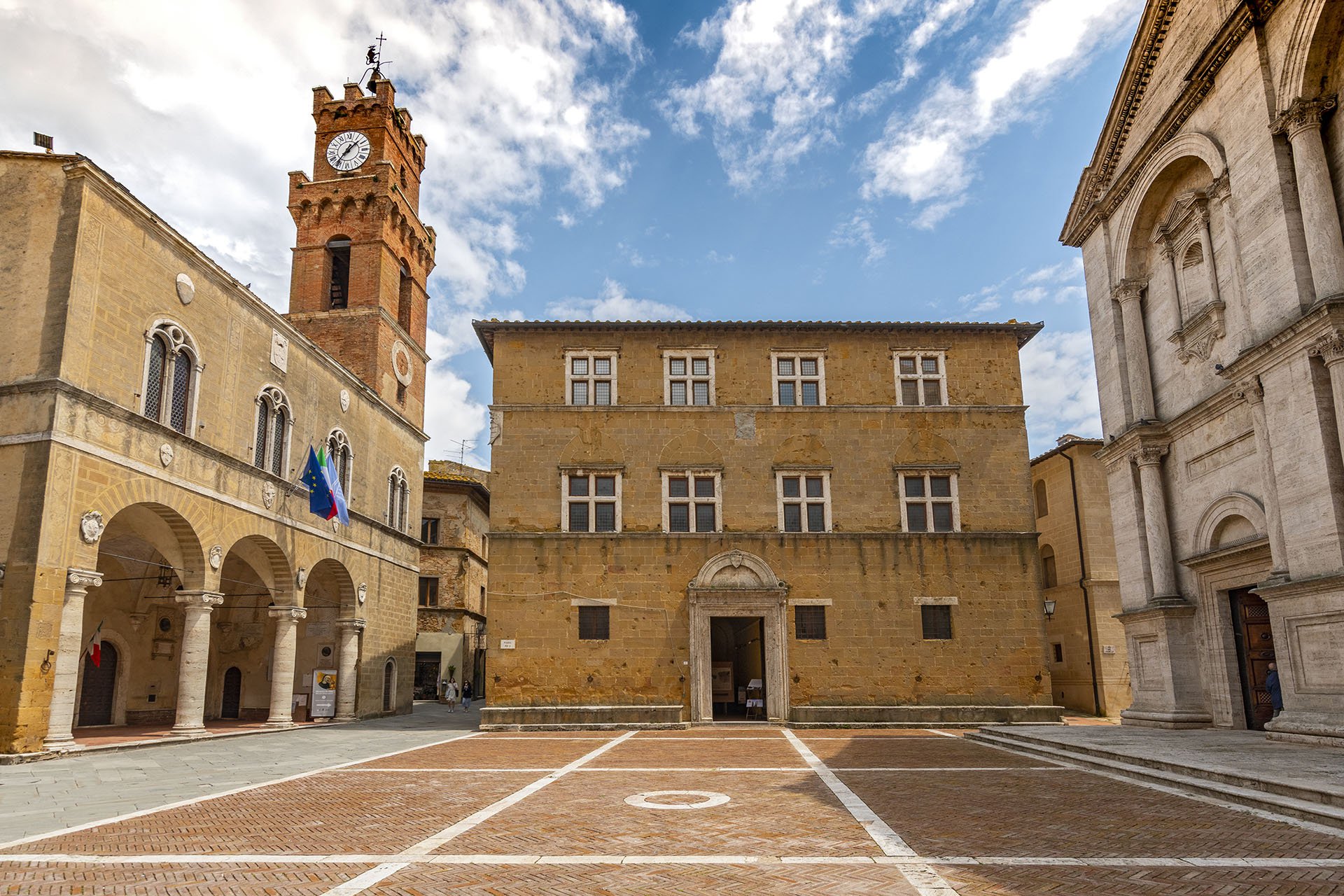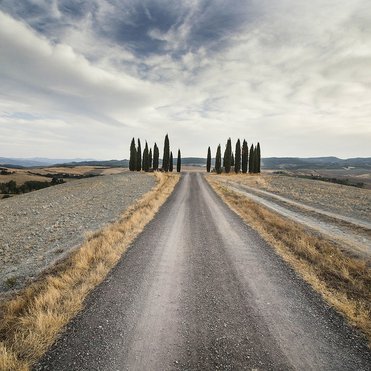The sundial of Pienza
The history of Pienza is closely linked to that of its most illustrious citizen, Enea Silvio Piccolomini, elected Pope Pius II in 1458.
In reality, Pius II was born in the ancient Corsignano, but when he became pope, he changed his native village according to the humanist principles of the time, giving it a new appearance and a new soul.
To make the city into the symbol he had imagined, he called the architect Bernardo Rossellino, who was a pupil of the great Leon Battista Alberti, entrusting him with the task of redesigning the cathedral and its square.
The monumental complex that we admire today goes way beyond aesthetic and architectural ideals. Designed and built as if it were a sundial, during the equinoxes the projection of the facade on the ground covers the nine squares of the paving in the square, making it a suggestive sundial.
With the introduction of the Gregorian calendar in 1582, the moments in which you can see the phenomenon have changed to some extent. Today, it can be admired twice a year; ten days after the spring equinox and ten days before the autumn equinox.

Tags
The Val d'Orcia and the legend of Ciparisso
The cypress is undoubtedly one of the undisputed symbols of the whole of Tuscany and in particular of the landscape in the Val d'Orcia
- by Redazione
- March 27, 2020



